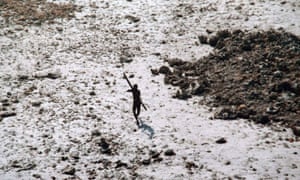
Many people know the overall idea of the Dust Bowl. The fact it lasted for almost a decade, and that it also happened at the time of The Great Depression. The one question I always thought about was what individuals had to live with during the Dust Bowl, and afterwards. With a great amount of research I found out quite a chunk of information.
While reading the Grapes of Wrath, I learned the elderly had quite a hard time with the environment during this time. While researching I found out children in the euro actually had a higher mortality rate compared to the elderly. Pregnant mothers lacked the nutrients for their baby to thrive, which then lead to miscarriages. Even after the dust bowl, women who survived had a large reduction in fertility. Many women gave birth to an average of roughly 0.3 fewer children over their lifetime. On the contrary, women who weren't exposed started the Baby Boom.
Survivors struggled in their later years. These people were two times more likely to experience physical and cognitive disabilities. Also one and a half more times likely to be living below the federal poverty line. Lastly. they were two times less likely to finish college. During that only 15% of American's earned a degree. Which is absolutely crazy to think about! Over 80% of individuals in today's world earn a degree.
The main diseases and sicknesses during this time were measles, strep throat, eye infections, meningitis, asthma and dust pneumonia. These diseases became very prevalent during the 1930's. Dust pneumonia was a much deadlier disease than modern day pneumonia. Many of the symptoms didn't appear until just before death. A patient would usually have a common fever, which would quickly spike, and attack the body from the inside. The individual would be dead in a matter of hours.
Today many refugees face almost the same problems today. Except many of these illnesses today can be cured easily. The World Health Organization made a great article that describes the illnesses migrants face in great detail.


It's crazy that these diseases/illnesses would just sneak up on these people just before their deaths. I think I remember you also mentioning in class, at one point, that asthma wasn't really a recognized thing until the Dust Bowl. It's all so sad.
ReplyDeleteI did mention it in class! It is very sad.
DeleteIt is insane how the dust bowls affected pregnancies. Obviously living in those conditions couldn't be good for anyone..or their children, but that fact that is caused so many miscarriages is just devastating.
ReplyDeleteI agree. Miscarriages are very devastating.
DeleteIt was very interesting for me to find out that just simple exposure to the dust bowl caused women to not have as many children. That's facinating to me considering in the modern day many women debate even having children at all.
ReplyDeleteWhile reading all this information I thought the same thing!
DeleteI think it's so interesting that you talked about the disease in the time period. The migration westward only made the spread of these diseases more prominent because families often kept sick people with them, which brought disease from place to place.
ReplyDeleteYes, diseases spread like a wildfire during that time.
DeleteFascinating statistics! I would love to see links to them. The still birth in the novel would be a great subject to write about, and compare with this other information.
ReplyDelete